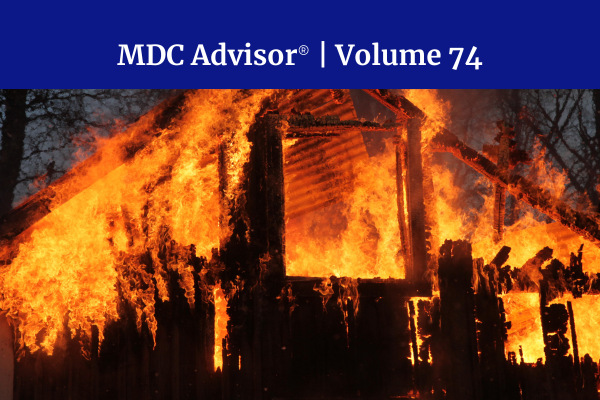
Risk Management Is it Time to Finally Implement Fire Resistive Residential Construction in CA?
By Robert C. McCue, P.E.& Michael A. Pollock, P.E.
Our shared recollections of California wildfires go back to the early 1950’s. Yes, somewhat dating me. Nevertheless, I recently did a quick search for information on this recurring problem and was surprised to find much information on the general topic of California historical fire records and the need to build fire resistive residential structures in the state.
Much like the general knowledge of the flooding risk in New Orleans from hurricanes prior to Katrina, it seems that everyone knew about the yearly fire danger in California but like the risk from earthquakes, and other rare but devastating events people just accepted them as part of the background of life in the region.
An interesting and informative, recently developed, fire map of the state allows one to see the individual footprints of fires from 1950 to the present as well as the extent of all of the fires during this timeframe. It appears that almost every part of the state has burned multiple times.1 A startling picture emerges that raises a number of questions. What did authorities know and when did they know it? The answer is almost everything. They knew about the likelihood of fires, conditions of terrain, ignition sources, weather influence and time of the year (Santa Ana Winds) and probability of location of the burn. Then why does the solution to better preparation, remain so elusive and current efforts to protect property, so ineffective?
The first part of the answer is lack of knowledge of the passive features of construction that can be incorporated into new construction or the renovation of existing structures. The 2008 California Code provides needed features and is available but not required across the state. The second part of the answer is that almost no one integrates active protection systems into construction. The typical homeowner response is to call for help and use a garden hose to fight the fire. Reviewing pictures of the current fire disaster sadly reveals swimming pools adjacent to burned out homes still filled with water. If that water could be integrated into active suppression systems as the flash fire moved past the home, then it could be saved.
A number of examples, of rebuilt homes using fire resistive features after previous fires destroyed the property, (that have been constructed using only passive fire resistive features) demonstrate that these features work effectively. Adding active suppression and better land management could offer additional protect ion for the properties.
Doing the same thing and expecting different results is insanity. What California needs now is widespread implementation of building codes leading the way to implement the best practices for passive fire protection for residential structures. In addition, practical land management practices to aid in protection of structures and provide the needed separation for fire-fighting must be implemented.
Since it is well established in the referenced articles that the fires are predictable and the most vulnerable areas have been identified, building effective fire breaks and fire roads along with modern forestry management practices can make a real difference in preventing the wholesale destruction of property and the loss of lives in the future.2
Californians can manage their future or as in the past the state will surely burn again.
One interesting California fact is that, If there were no fires then there would be no Giant Sequoias in the state and that reality for fire good and bad goes back thousands of years.3
MDC Systems provides forensic engineering services to a wide range of clients around the world. For more information visit our website at www.mdcsystems.com.
![]()
1 Fires prior to 1950 were particularly devastating especially during the 1930’s at the height of the drought years. Accurate data on the footprints is not available to include in the interactive map.
2 Likely the most cost effective preventitive
3 Giant sequoias depend on fire to reproduce. The heat opens their seed cones, their seeds are released, the flames clear the earth for their germination. While lesser trees blaze around them, the giant sequoias stand virtually unscathed by the flames. They’re remarkably fire resistant.



0 Comments